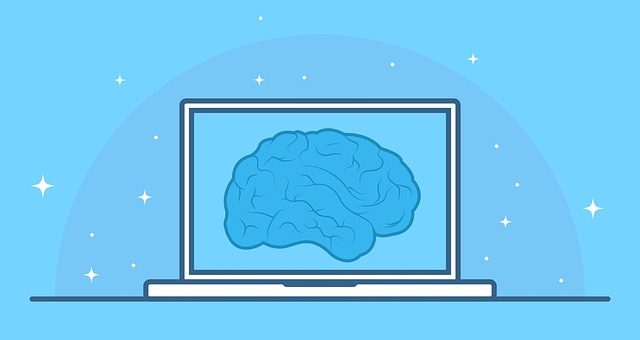The majority of online sites are now responsive. However, having a responsive website on its own is insufficient. Users want customization at all levels. Improving user experience and engaging your customers keep them interested in your platform and increase the possibility of determining what they need from it.
Machine Learning and Artificial Intelligence (AI) help designers to automatically record user preferences and inputs in order to improve the user experience. This essay looks at how AI and machine learning are revolutionizing responsive web design.
Responsive Web Design
Responsive web design is a method of developing websites that adapt to the orientation of the device on which they are viewed. Users will get a more seamless and effective User Experience as a result.
Responsive web design is based on three fundamental ideas: responsive images, fluid grids, and media queries. Developers may utilize the media viewport meta tag in such circumstances.
Responsiveness of a Website: Is It Important?
Users access the internet from a variety of devices in this new era of distributed networks. You may connect to the web using your phone, laptop, PC, tablet, or smartphone. For allowing users to view a site on their preferred device, the website’s responsiveness is critical.
Improved user experience
On all screen sizes, a responsive web page layout is extremely adaptable. Users can effortlessly navigate across devices regardless of their device. Websites that require a suitable Call to Action (CTA) are examples of this. On mobile, the CTA will appear smaller while on desktop, it will look larger.
Mobile traffic growth
According to Google, Android devices account for more than 50% of all Internet traffic. As a result, responsive design has become an essential component of modern websites. Mobile responsive sites are given a higher priority by Google than non-responsive ones.
Quicker site loading time
Responsive websites load faster than non-responsive ones on any device, since they are created with responsive pictures and fluid grids. Higher website loading speeds have a beneficial influence on the number of people who visit your site.
Low bounce rate
Bounce rate is the proportion of people who only viewed a single page before leaving the website. Responsive websites provide for a more pleasant user experience, which leads to increased dwell times. Lower bounce rates will result in improved conversions thanks to greater click-throughs and explorations of other parts of your website.
Responsive Web Design: What AI and Machine Learning Is Doing to It
The objective of developing responsive websites is to create a pleasant user experience. AI technologies can aid web designers and developers in streamlining their processes and codebases, as well as assisting them with large data analyses and automation.
Personalized Content
AI technologies may be used to categorize pictures according to the picture’s substance. AI algorithms examine pattern structures in images and compare them to photographs with comparable pattern structures. When the patterns match, it is considered a success. Image recognition opens up new possibilities for image optimization based on user behaviour.
You may apply this technique to a variety of landing pages. Personalizing image recommendations based on the user’s past interactions or purchases, for example, is one method. Showing items that are likely to be of interest to your users can boost your sales and improve the UX by displaying suggestions that are personalized for each user.
Websites may use this AI capability to detect user trends on a broad, holistic, and individual level by employing big data analytics. The website can then group individuals who meet particular pattern criteria into categories and recommend images that are relevant to them.
Use AI to Improve User Experience
The goal of UX is to make the design user-friendly and simple to use by studying human behaviour. The study involves collecting data on users’ behaviours in order to discover what they find most appealing. AI algorithms can assist design teams in analyzing massive amounts of user data in order to build apps based on individual tastes.
Chatbots
Chatbots are computer programs that can mimic a conversation or interaction with a person in natural language using mobile apps, messaging, websites, and phones. Chatbots make use of Natural Language Processing (NLP) technology to enhance the user experience and customer support for businesses.
Artificial intelligence interprets speech or text input to learn more about customer interactions and derives meaning from it. Customer service indicators improve as a result of AI chatbots. In fact, 75% of firms using chatbots claim at least a 10% increase in client satisfaction.
Chatbots may help increase customer loyalty by providing faster, better support. They can work 24 hours a day, seven days a week, unlike human customer service. Robots are more resistant to stress and annoyance from bad clients than people are. AI chatbots may significantly enhance the user experience with robots replacing humans in customer service.
Quantitative usability testing
Usability testing is a method for examining the usability of a website or mobile app by subjecting it to realistic users’ actions and reactions. A usability test gathers a lot of information, including the device type, session length and duration, drop rates, application source, screen recordings, user flow, number of visitors per day, and many more vital pieces of data. AI algorithms can quickly analyze this massive amount of data and deliver practical insights into human behavior.
Access to the right tools
Users can access the product in many different ways. AI lets you create numerous design variants that quickly adapt to users. These changes are based on user behavior data and employ both design-based approaches and psychology. Furthermore, AI makes it simpler for marketers to anticipate customers’ reactions by offering a thorough grasp of UX team’s products.





